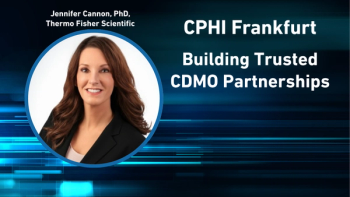
- Pharmaceutical Technology-07-02-2010
- Volume 34
- Issue 7
Q&A with Metrics' David Varley
Varley, director of commercial operations, discusses one-stop shops and timelines.
PharmTech:
What is the biggest industry challenge you're now facing?
Varley:
Our customers want the fastest possible timeline from development to commercial manufacturing. A client might use a powder-in-capsule for first-in-man studies, but it might not be the best dosage form if they want to scale up to commercial quantities quickly. We then have to come up with a dosage form that's scaleable and can move into commercial production. It's a matter of balancing speed with cost and efficiency.
PharmTech:
Do you see a new industry trend emerging?
Varley:
I think most of our customers are looking for a one-stop shop where they can go all the way from development through clinical, scale-up, and registration batches to commercial manufacture. Metrics has a depth of experience, we're in a single facility, and we collaborate with our development colleagues on a regular basis. In fact, I attend development-staff meetings, and they attend the commercial-operations staff meetings. So, we maintain that contact and are involved, to some extent, in each other's operations, so that when projects or products do cross the fence from development to commercial manufacturing, we don't expect any surprises.
PharmTech:
Has your manufacturing department ever influenced how your development department approached a particular project?
Varley:
We do, in fact, get involved in development. If they're looking at a particular formulation that may lead us down a path where we don't think our technology base is as strong, and we have an opportunity to influence it early in the process on the development side, we may influence the final decision. Some of the commercial-operations individuals work on the development side, particularly when we get to a registration-batch issue. Those development scientists also help us with the initial launch batches. We maintain that continuity and keep the scientists involved. That continuity, again, goes a long way toward reducing the number of issues we deal with.
Articles in this issue
over 15 years ago
A Glass Actover 15 years ago
Exploring the Tools in Nanoparticle Analysisover 15 years ago
Statistical Solutions: On the Verge of Significance: Why 5%over 15 years ago
Top-to-Bottom Collaborationover 15 years ago
Report from Indiaover 15 years ago
Comparison of Superdisintegrants in Orally Disintegrating Tabletsover 15 years ago
In the Spotlight July 2010over 15 years ago
Be Careful for What You WishNewsletter
Get the essential updates shaping the future of pharma manufacturing and compliance—subscribe today to Pharmaceutical Technology and never miss a breakthrough.




